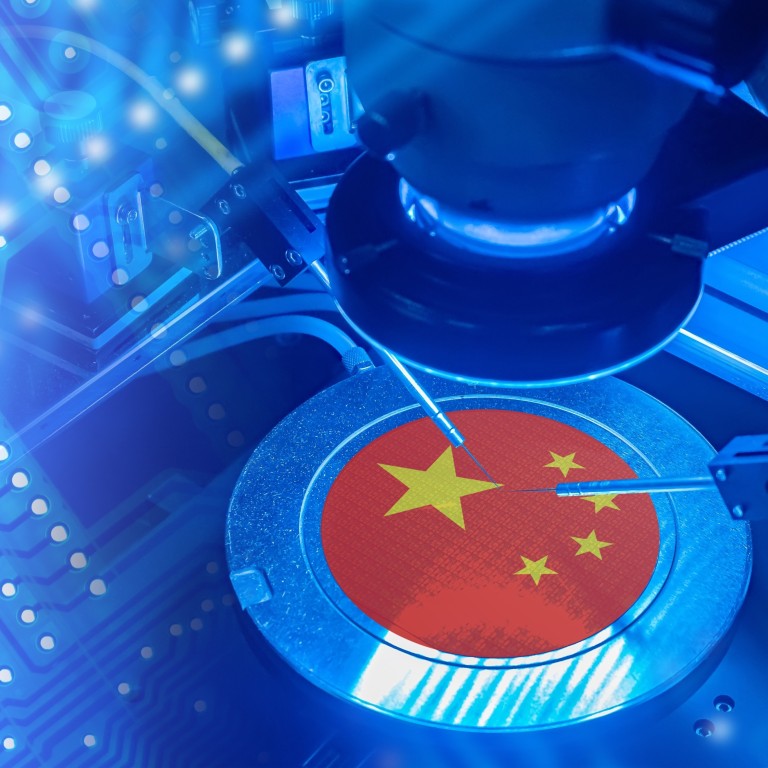
China gave 190 chip firms US$1.75 billion in subsidies in 2022 as it seeks semiconductor self-sufficiency
- China’s largest chip maker, SMIC, was also its biggest subsidy recipient at US$282.1 million, illustrating national priorities amid a protracted tech war
- Other top recipients include Apple supplier Wingtech Technology and equipment maker Naura Technology, although some companies received as little as US$30,000
The Chinese government doled out more than 12.1 billion yuan (US$1.75 billion) in subsidies to 190 domestically listed semiconductor companies in 2022, industry data shows, as Beijing seeks to counter escalating US sanctions targeting advanced chip-making.
The 10 largest recipients received 45 per cent of the payouts, amounting to 5.46 billion yuan, according to a report on Sunday from Chinese media outlet ijiwei, which compiled the data from Wind, a financial data provider. Corporate filings from the top 10 firms confirms the subsidy amounts.
The report only covered companies listed in mainland China, meaning either in Shanghai or Shenzhen. Many other unlisted firms have also received government support, including through loans and direct investment.
SK Hynix rows back on plans to upgrade chip tech at Wuxi plant: report
The only other company to be given more than 1 billion yuan was Sanan Optoelectronics, an LED chip maker based in the southeastern city of Xiamen, which received 1.03 billion yuan.
Shaanxi-based chip packaging company Tianshui Huatian Technology came in third with subsidies of 467.1 million yuan.
Among the other top 10 recipients are Wingtech Technology, an Apple supplier that develops and manufactures chips and mobile terminals; Naura Technology, a Beijing-based chip equipment maker and supplier of US-sanctioned Yangtze Memory Technologies Co (YMTC); and Loongson Technology, a flagship CPU designer. Each received subsidies ranging from 100 million yuan to 400 million yuan.
However, subsidy amounts varied greatly depending on the company, with those ranked at the bottom receiving around 200,000 yuan for the year – less than US$30,000.
China’s top 10 chip subsidy recipients in 2022
| Company | 2022 subsidies (yuan) | 2021 subsidies (yuan) |
|---|---|---|
| Semiconductor Manufacturing International Corp (SMIC) | 1.95 billion | 2.44 billion |
| Sanan Optoelectronics | 1.03 billion | 921 million |
| Tianshui Huatian Technology | 467 million | 510 million |
| Wingtech Technology | 389 million | 347 million |
| HC SemiTek | 326 million | 424 million |
| Naura Technology | 318 million | 305 million |
| Anhui Truchum | 299 million | 225 million |
| Cambrian Technologies | 270 million | 218 million |
| Chaozhou Three-circle | 213 million | 135 million |
| Loongson Technology | 196 million | 81 million |
Source: Annual financial reports
Since late last year, a number of municipal governments in China – including Chengdu in southwestern Sichuan province, Nanjing and Suzhou in eastern Jiangsu province, as well as Guangzhou and Shenzhen in southern Guangdong province – have answered the Beijing’s call to boost the development of the country’s integrated circuit industry by setting aside millions or billions of yuan in subsidies.
Suzhou alone promised to foster the development of 10 “leading innovative companies” and add three more listed firms to its local semiconductor ecosystem this year.
Meanwhile, some unlisted and Hong Kong-listed firms have received significant financial support from local and central authorities.
In late February, YMTC, China’s top memory chip maker, received US$7 billion in fresh funding from a group of state-backed investors, including the National Integrated Circuit Industry Investment Fund, known as the “Big Fund”.
Hong Kong-listed Hua Hong Semiconductor, China’s second-largest chip foundry, also received state backing for its US$6.7 billion wafer fabrication plant in eastern Wuxi city, according to its stock exchange filing in January.


